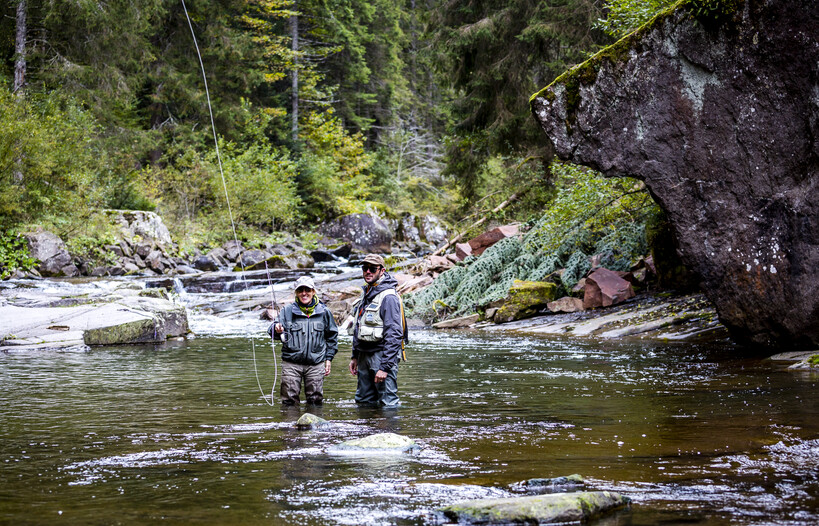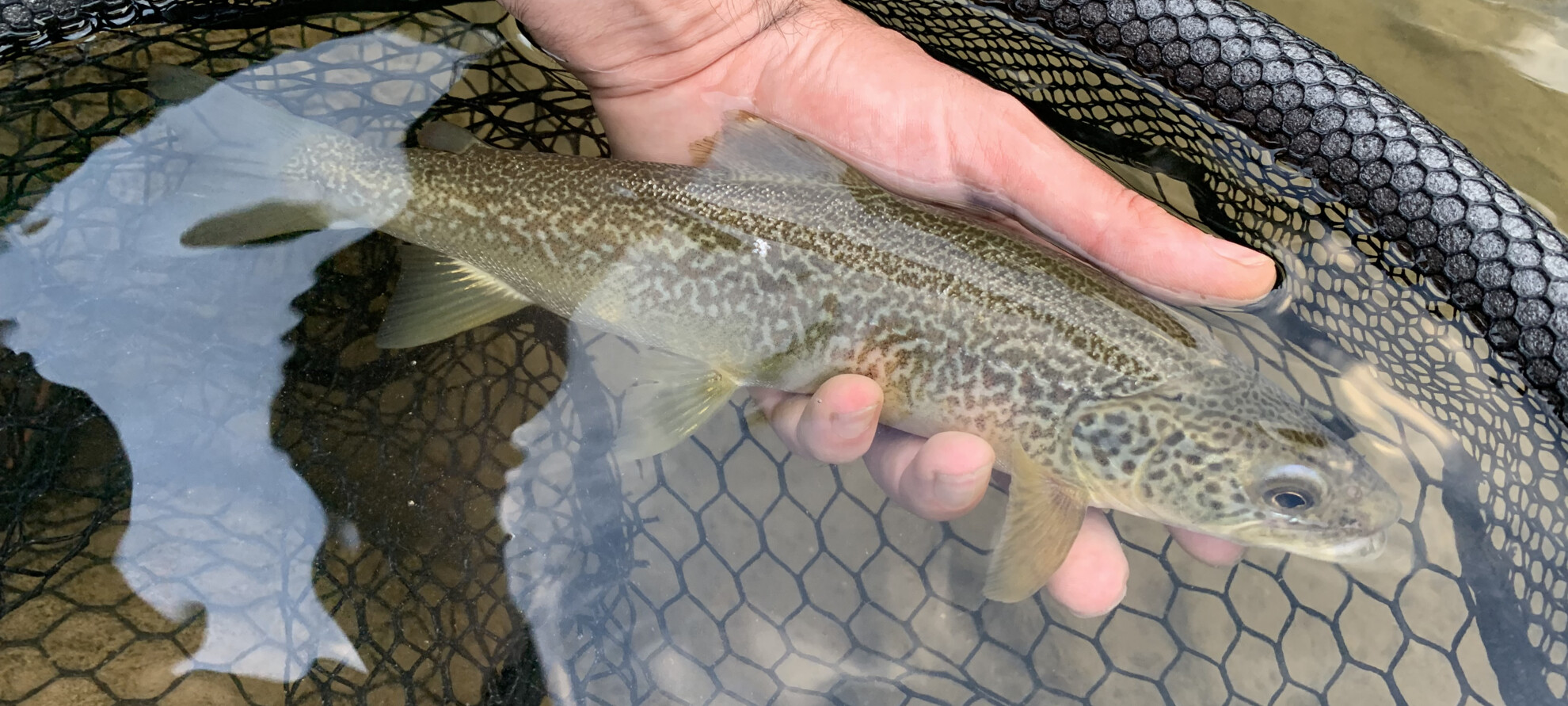Guide to Fishing for Marble Trout in Trentino
The Best Fishing Spots and the recommendations of our Trentino Fishing Guides
Called truta vecia, miaga or “truta nostrana” in the local Trentino dialect, the marble trout is the queen of our Alpine waters. In this guide we will point you to the best fishing spots where you can find marble trout, and give you some useful tips.
How do you recognise marble trout? H2
On its back and sides, the marble trout has irregular sinuous gray, brown or greenish stripes, that extend to the operculum, though not to the fins. It has a slender and cylindrical body, large head, very large mouth with jaw extending to the posterior edge of the eye, and strong teeth. The dorsal and caudal fins are dark gray; the pectoral, ventral and anal fins are light gray or yellowish.
In the juvenile stage growth, and just like young brown trout specimens, marble trout may also have red spots on their body. Marble trout can exceed one meter in length and weigh as much as 15 kg.
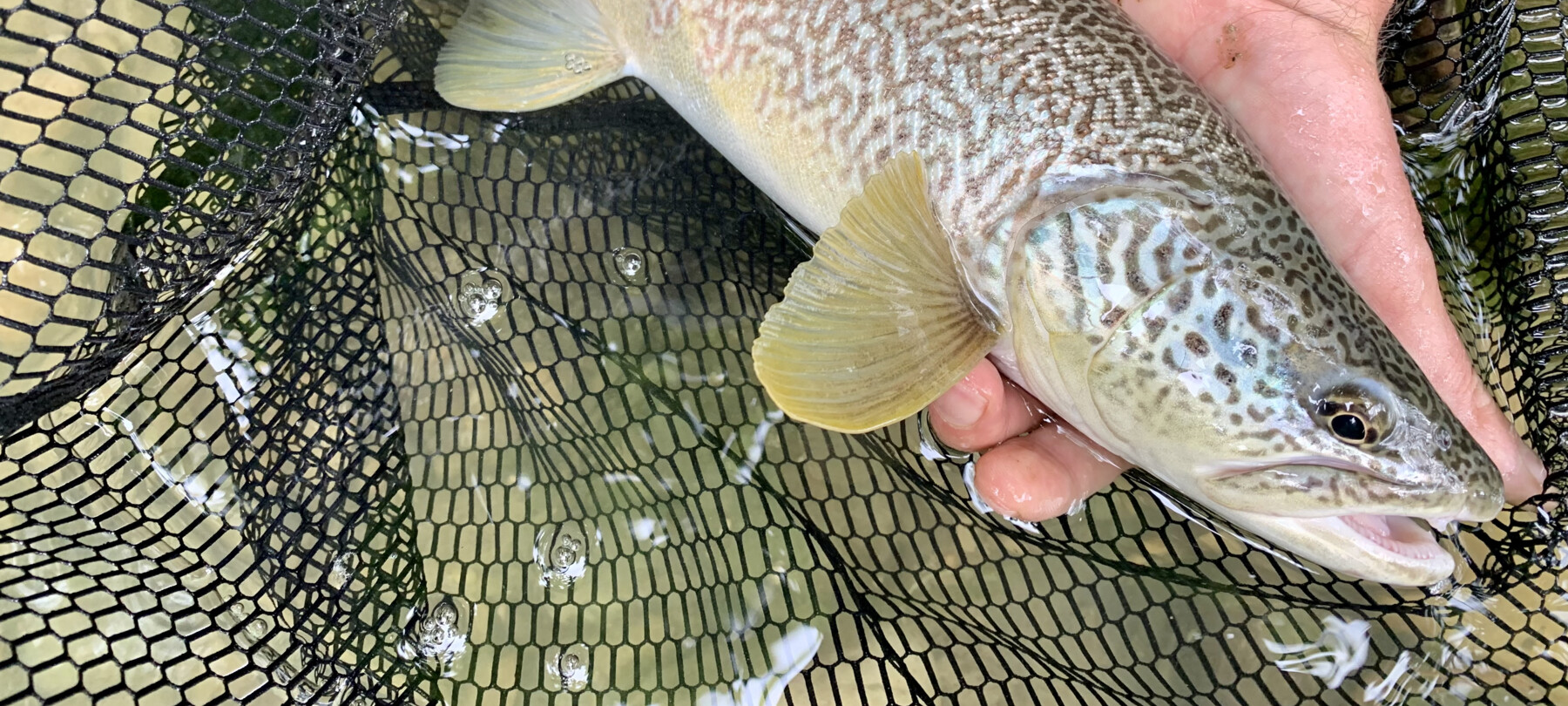
Marble Trout in Trentino: where to find them
The preferred habitat of marble trout is the medium-upper stretch of larger watercourses, full of hideouts and deep holes, downstream of brown trout areas. They are often associated with grayling, bullhead, rheophilic cyprinid species (barbel, chub and roach), and brown trout as well. They can move to lakes where they take on the colours, more or less pronounced, of the miaga, or lake trout.
In Trentino, you mainly find marble trout along the Avisio stream, in Val di Fiemme or Val di Cembra, or along the Noce stream, between Piana Rotaliana and Val di Non. Below you can find a guide on the best fishing spots, some advice on how to fish marble trout and lots of useful information, divided by areas:
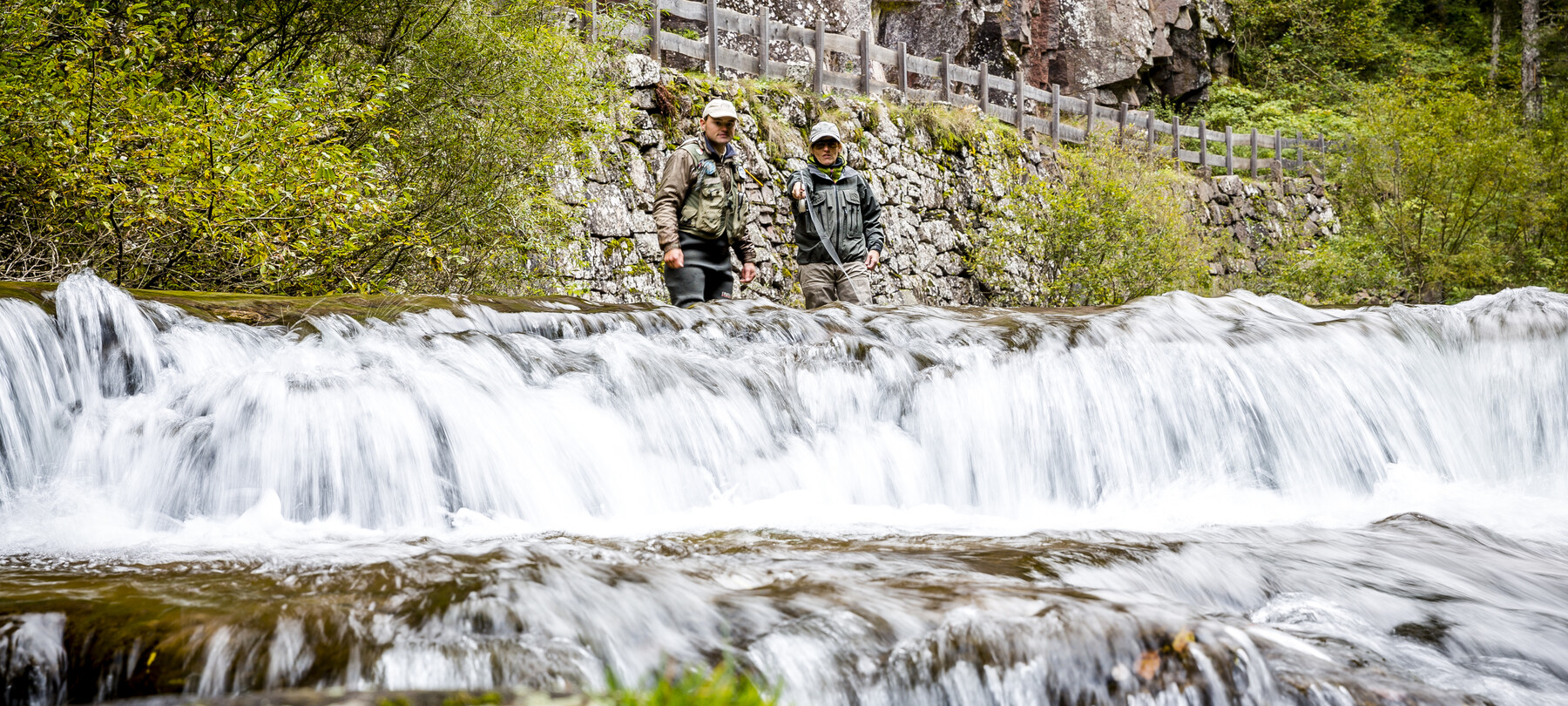
Marble Trout in Val di Fiemme - Avisio Stream
The Avisio is a stream that originates from the Marmolada glacier and is characterised by a large bed with boulders of considerable size. The river habitat is very varied and water runs through deep holes shaped by contact with rocky headlands, rapids and slower plain stretches.
The Avisio stream is the ideal habitat of marble trout, some of which can weigh as much as 7-8 kilos! In addition to marble trout, in the river we can also find a few brown trout, which come down from nearby streams, and hybrids between the two species.
Fishing Spots in Val di Fiemme
The easiest fishing area to approach, offering a good density of fish, is located in the town of Predazzo, from the mouth of the Travignolo stream to a little upstream of the town, towards Moena.
In this area the bed levels are basically stable and the water is clean thanks to the Moena dam, that discharges water further downstream. The low levels often permit spotting fish from the bicycle trail running along the river; therefore, you can fish on sight here.
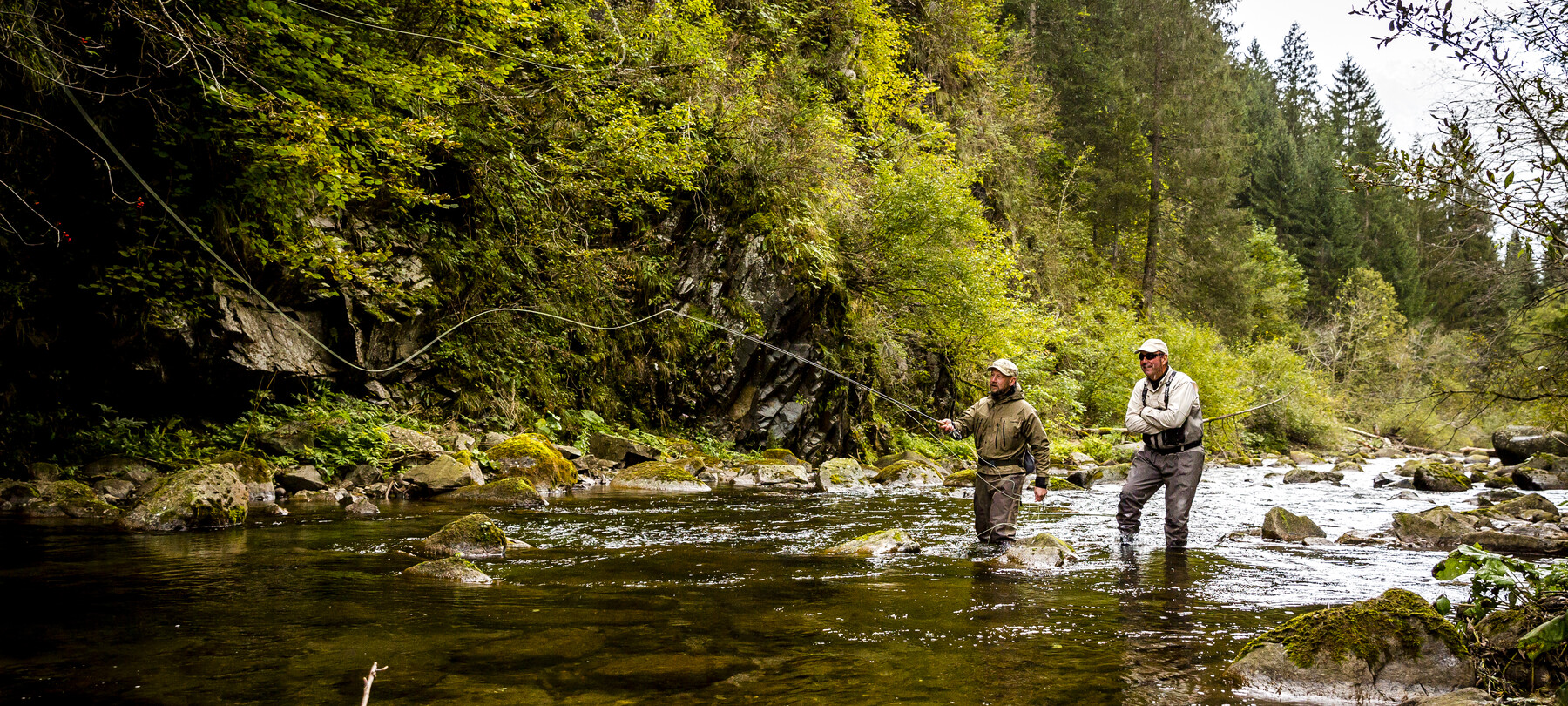
Useful tips
You can more easily encounter brown trout during hot and sunny days, since marble trout prefer feeding when light changes and on cloudy days.
The most effective fishing techniques change during the course of the season. From season opening, in early March, until early spring, a period characterised by cold and shallow water, nymphing is the best way to induce a fish to take the bait.
With the arrival of floods (late spring/early summer), even streamer- and spin fishing, which must be practiced in all waters with a single barbless hook, can yield great results.
During the summer, on the hottest days when water is shallow, dry fishing also gives you a good chance of catching trout, which mostly feed on the hatches of large mayflies, very common during the summer.
We recommend that you wear a raincoat in any season of the year and always dress in mountain sportswear, since even during the summer it can be cold. For the months of March and April hat, gloves and anorak are strongly recommended, since it may occasionally snow.
Permits
It is possible to purchase your fishing permit for these areas on the Trentino fishing website or at resale points whose location you can find on the website of the Fishermen Association of Valle di Fiemme.
Fishing Techniques Permitted
You can only fish with artificial lures, and marble trout and hybrid trout must be released. During autumn, until 31 October (the day when the fishing season in the waters of the valley floor ends), only fly, dry or nymph fishing are allowed. In this season, given the abundance of food and the onset of reproduction, it is easier to catch large specimens.
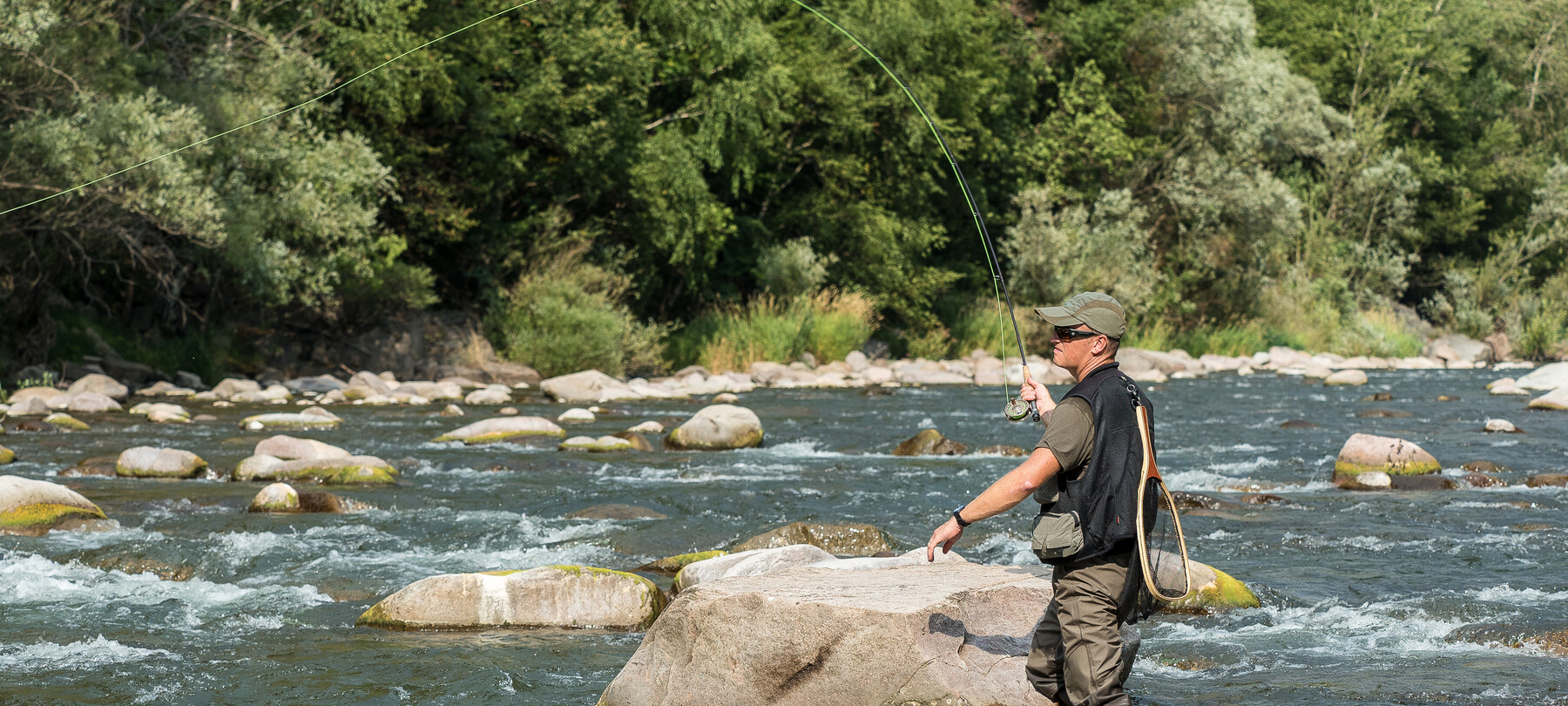
Marble Trout in Val di Cembra - Avisio Stream
A large left tributary of the Adige, the Avisio stream originates from the Marmolada glacier, flows through the valleys of Fassa, Fiemme and Cembra and into the Adige river, downstream from the town of Lavis. The CK (Sover/Piscine) stretch runs in upper Val di Cembra, from Sover to Casatta, in seemingly unchanged geological environment: a deep valley carved into porphyritic rocks.
The Avisio stream features a natural bed with large boulders where deep holes alternate with markedly stream-like scrapers. The river habitat is ideal for hosting marble trout, which thrive in these waters. However, to be sure, here you can find an abundance of other species, such as common barbel, chub and brown trout.
Fishing Spots in Val di Cembra
Access often requires long walks, even if near Grumes/Sover you can park a few metres from the stream, reachable by dirt roads. Being accompanied by a Trentino Fishing Guide is nevertheless essential, at least for the first few outings.
This is a technical spot, at times challenging but very stimulating and varied, and can give great emotions. It is an ideal place for fishermen who look for challenges surrounded by wild nature, and a real paradise for spinning and fly-fishing lovers.
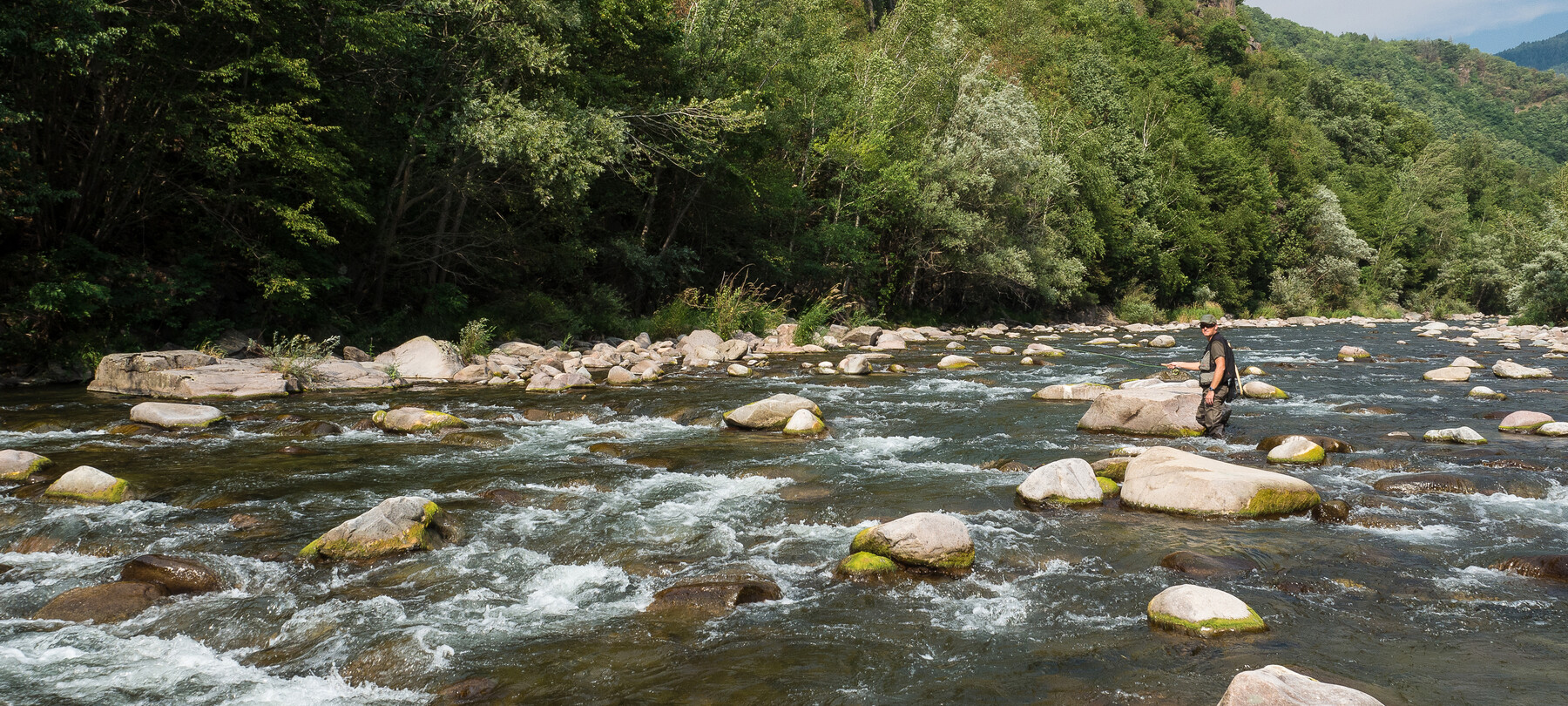
Useful tips
Trichoptera and stonefly imitations are particularly suitable for nymphing throughout the day. From mid-April to the end of September, you can give a try to dry fishing with mayflies during the day and with sedges in the evening.
As to spin fishing, it is possible to use small spinners to large minnows to probe the deepest holes. Waders are essential, and landing nets are mandatory.
Permits
Paper permits can be purchased at the points of sale listed on apdt.it, and on trentinofishing.it. Electronic permits are available on the Hooking app.
Fishing Techniques Allowed
Here you can only fish with artificial bait and must release any fish species you catch. Opening: first Sunday of March. Closing: 30 September.
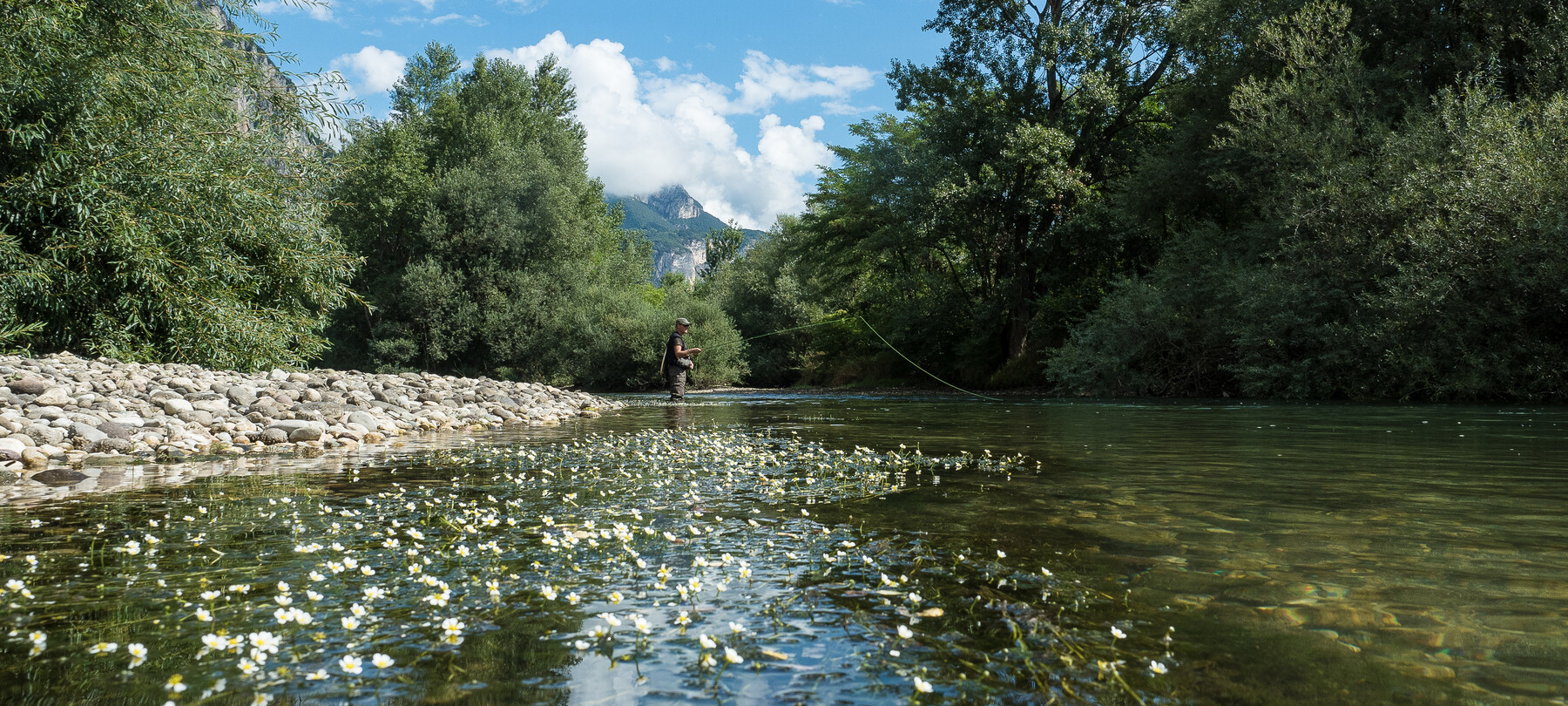
Marble Trout in Piana Rotaliana - Noce Stream
The Noce is a large stream that originates in the Stelvio National Park and enters the APDT (Associazione Pescatori Dilettanti Trentini, Trentino Amateur Fishermen Association) concession at the railway bridge in Località Rocchetta, after crossing Val di Sole and Val di Non.
After leaving the impetuous character it has in the valleys, here the stream takes on the typical characteristics of a valley-bottom waterway, flowing through green areas and suggestive expanses of water buttercup. Scrapers, holes and long fords follow one another in this stretch, reserved for fly fishermen and to fishing with lures.
Fishing Spots in Piana Rotaliana
This is a catch-and-release area that is well populated with marble trout, grayling and some brown trout. The spot is easy to access, but you need to have mastered a good technique and a certain mischievousness in order to trick this absolutely wild fish. A small road with little traffic runs along the stream and you can park near Ponte delle Fosine, a few tens of metres from the banks.
It is an ideal stretch for all ages and for those who do not have the time or desire to work too hard.
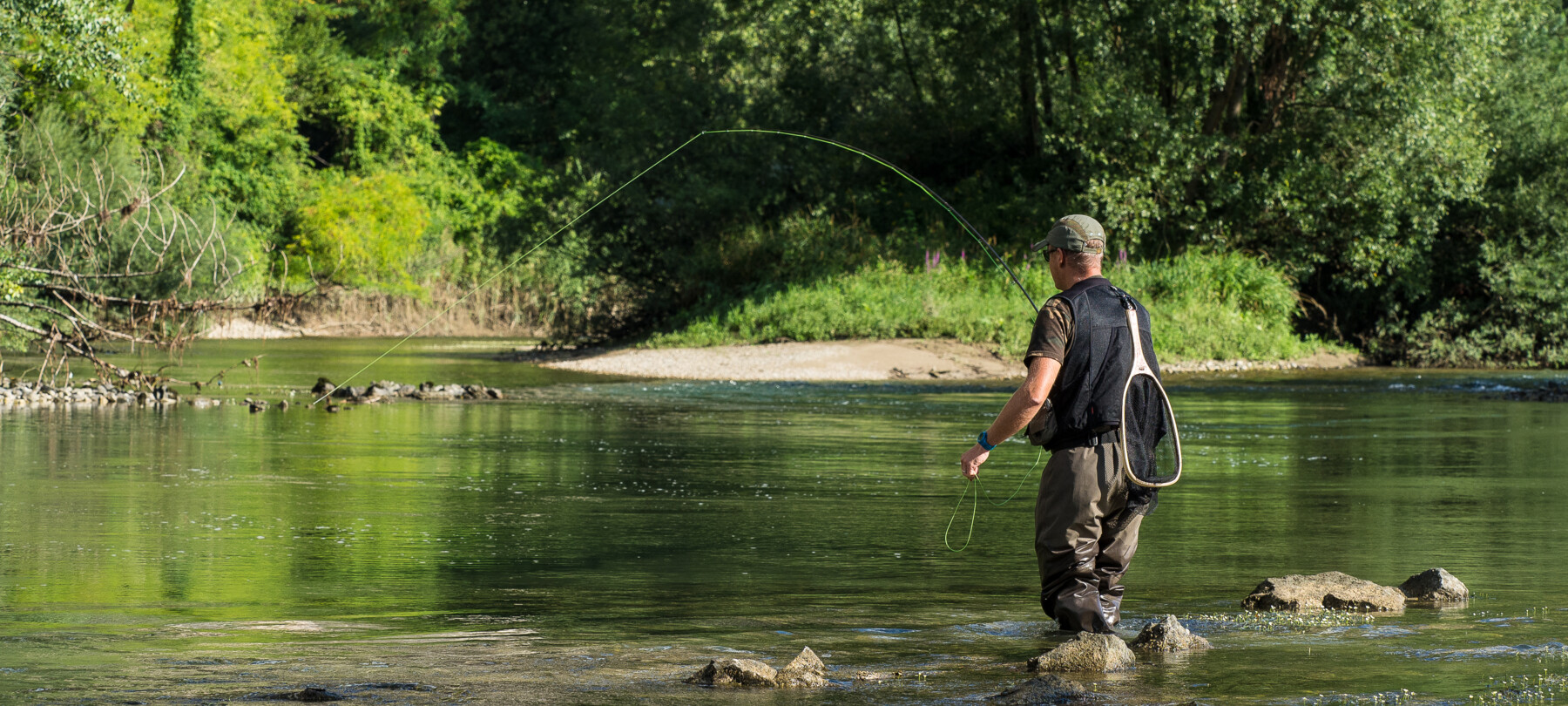
Useful tips
Fast currents ideal for nymphing alternate with slow-moving fords that are great for dry fly and stream fishing. Nymphing on the 14 or 16, even with bright colours, are indicated to trick graylings. Imitations of Leuctra Fusca in the cooler months and of large mayflies in the warmer months can make the difference.
For spin fishing, we recommend 5-10 cm sinking minnows, medium-sized spinners and fast-moving floating jerkbaiterkbait . Waders are essential, and landing nets are mandatory.
Permits
Paper permits can be purchased at the points of sale listed on apdt.it, and on trentinofishing.it. Electronic permits are available on the Hooking app.
Fishing Techniques Allowed
Here you must fish exclusively with artificial bait and cannot keep any fish you catch, no matter the species. Opening: first Sunday of March. Closing: 30 September (31 October for fly fishing).
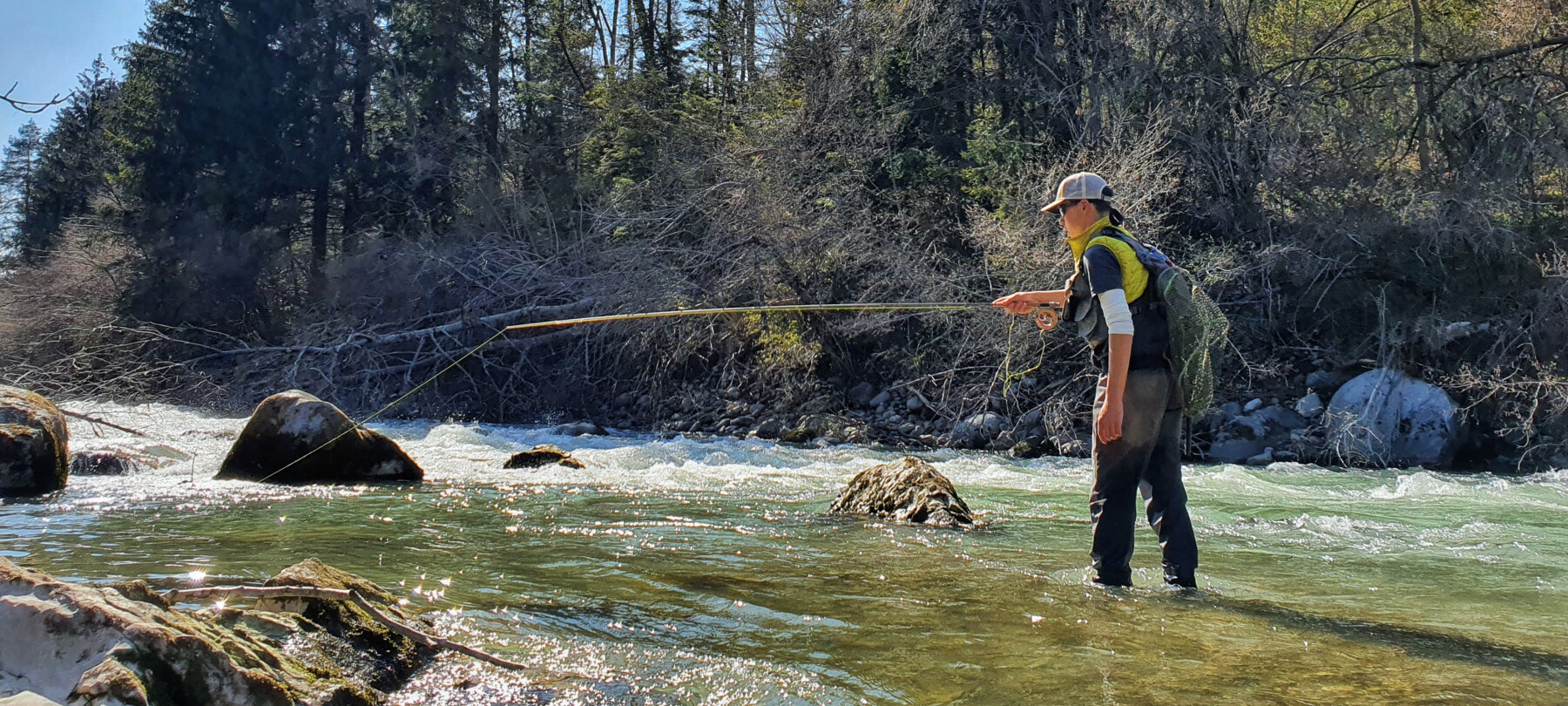
Marble Trout in Val di Non - Noce Stream
The stretch of the Noce stream that flows in Val di Non is a very popular destination for fishermen because it is tail water, as it originates from the release of a dam located on Lake Santa Giustina, the largest artificial reservoir in Trentino. For this reason, the waters of this stretch of river are less affected by the melting of spring snows or by summer storms.
For long stretches, the Noce river in Val di Non flows through deep and suggestive gorges and ravines, creating wild settings and very captivating landscapes. Quick scrapes alternate with deeper and more calm stretches formed by large holes or suggestive herbaceous vegetation. As it flows southwards, towards the Val di Non mouth, the landscape changes and the narrow stretch of river between the canyons ends, giving way to the typical valley-bottom river.
Fishing Spots in Val di Non
In Val di Non, thanks to the introduction of far-sighted fishing regulations that have protected the marble trout population over time by not allowing this precious and iconic salmonid to be retained, some stretches have been established with specific regulations in which only artificial lures may be used.
Among these stretches, the most coveted spots are the so-called HZT and HZT1 Trofeo zones and the NKB and NKB1 no-kill zones. In these spots, which are much appreciated by both local fishermen and tourists, you can practice fly and spin fishing (single hook without barb).
As you plan to tackle these stretches, it is important to check the opening dates, that are differentiated, and remember that, on some days, advance booking is required and access allowed only to a limited number of fishermen.
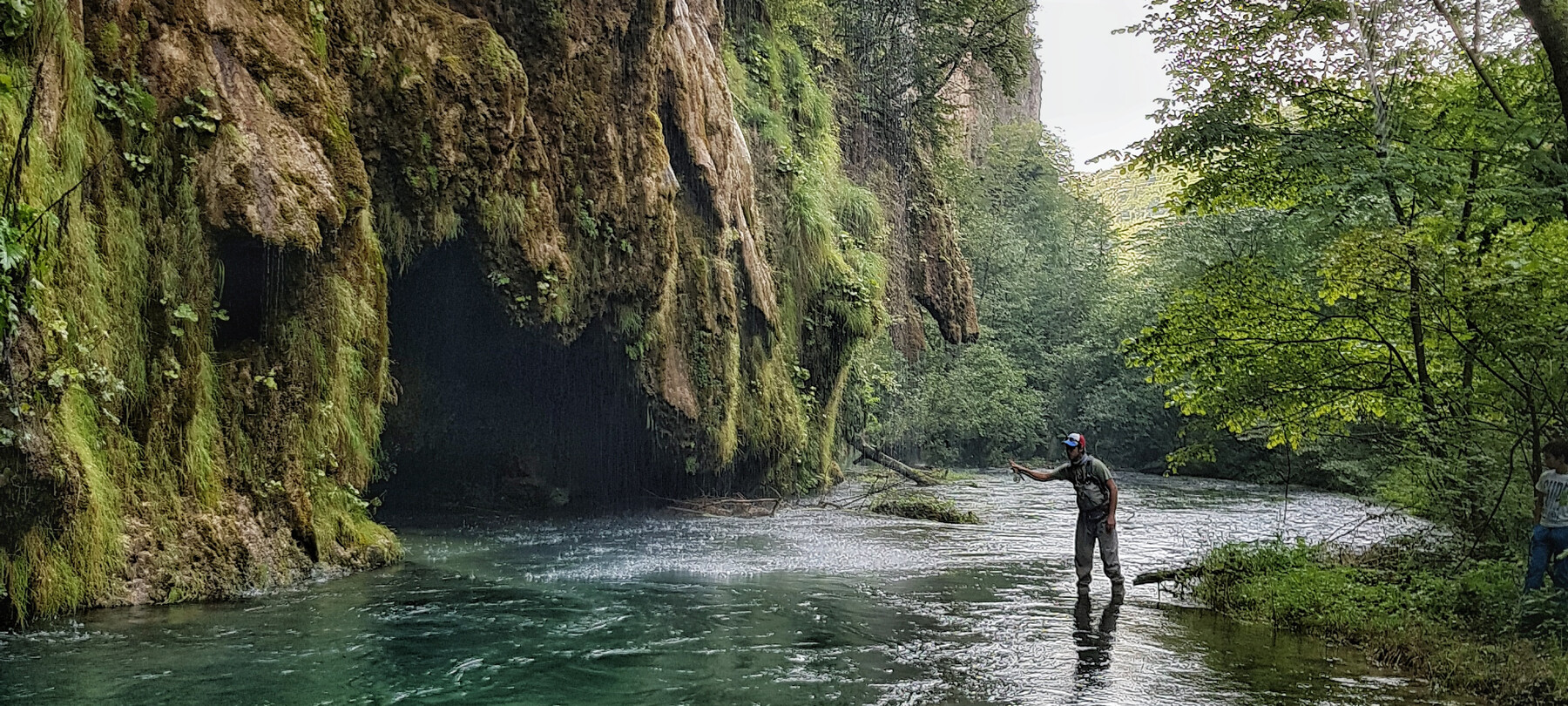
Useful tips
Tackling a stream like the Noce in Val di Non offers even the most experienced fishermen the opportunity to test themselves. All skills and knowledge must be used to lure suspicious wild trout that populate its waters.
Indeed, the Noce is populated by shrewd trout and the chances of you coming across large specimens is not at all unlikely. Whether you opt for spin or fly fishing, you must approach the river with caution so as not to make the trout suspicious.
The river is the habitat of choice of an equal number of marble (including large specimens), brown and hybrid trout. Especially at the beginning of the season, in March and April, marble trout are particularly active and willing to come out of their redds.
For those who opt for spin fishing, especially at the beginning of the season, the minnow lure is the most suitable, while in the late season, when water is a bit warmer, spinnerbait is preferred. For fly fishing enthusiasts, the use of small nymphs or small streamers is absolutely recommended at the beginning of the year, while from the end of April, particularly when insects like mayflies begin to hatch, it is possible to try one’s hand at dry fly fishing.
We strongly recommend the use of waders, as the river must be forded in several points, and the use of appropriate sports and technical clothing is a must. In this regard, as a precaution, we always recommend that you bring along a hat, a rain jacket and a thermal bottle. For the long summer days, we strongly recommend that you forego fishing during the saddle of the day, focusing instead on the early morning hours or still better in the evening, with fishing sessions that can give dry-fly fishing lovers exciting catches.
Permits
You can purchase permits online on the Trentino Fishing website, saving them directly on your Smartphone for easy retrieval if the authorities perform local checks.
If you prefer to contact traditional retailers, please refer to the following list of authorised resellers. At these locations, you can also consult maps that make the identification of fishing spots easier.
Fishing Techniques Allowed
In some spots of Val di Non’s Noce stream is possible to fish on dry land (check the regulations of the local fishermen’s association) already from the first Sunday in February. Our personal advice is to start in March in order to respect the natural reproduction cycle of salmonids.
As discussed above, the use of natural bait is forbidden in virtually all stretches of the Noce stream. Some of the stretches most sought-after especially by fly fishermen open on 1 June.
Attention: as concerns marble trout, only catch-and-release fishing is allowed in the Val di Non concession and the use of barb is forbidden. Marble trout is also found in some tributaries of the Noce stream, and, in particular, in the Pescara stream, which offers a challenging NO-KILL stretch.
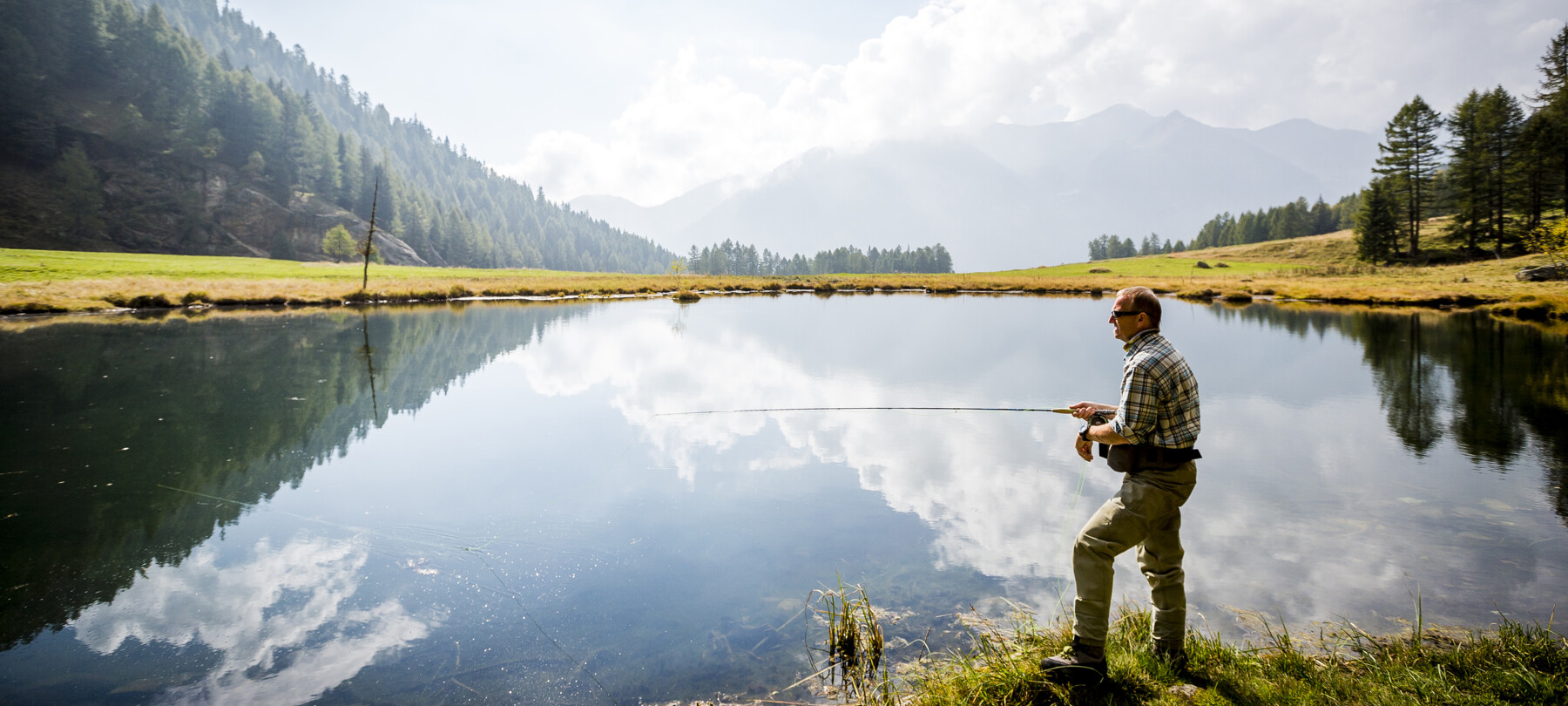
Marble Trout in Val di Sole - Noce Stream
The Noce stream, starting from Cogolo in Val di Pejo and descending to Lake Santa Giustina, offers 30 km of water and natural stretches with holes, scrapes and notable presence of cyclopean boulders and deep redds, which form the best habitat of Marble trout. The waters are generally accessible and many stretches of the stream are flanked by a bicycle trail and by minor roads.
Here, Marble trout are found in good number, also thanks to the hatchery that, for almost 50 years, has been supporting natural reproduction. The stream flow is medium-high, with the minimum flow peak in mid-March, and progressive increase at the beginning of May, during freshet season. Marble trout here predominantly feed on insects at the bottom. Insect hatching on the surface is rare, due to the flow and temperature of the stream in the warmer months.
However, marble trout also respond to artificial lures of all kinds, and not just artificial flies. On average, marble trout here can weigh as much as 2.5 kg and be 60 cm long, and larger specimens have been caught in the recent past.
The stream waters are generally crystal-clear, although they may get slightly cloudy in spring and autumn, and cloudy in the months of July and August due to the presence of glacial silt, which is naturally present in the glaciers that feed some branches of the stream.
In general, the level of “freezing” above 3000 metres leads to this phenomenon, if only for a few hours of the day. If the stream is cloudy, there are good alternatives in the area to catch marble trout in clear waters, for example the Rabbies stream and, even better, a stretch of the Noce upstream of Cusiano.
Fishing Spots in Val di Sole
The most popular spots are the 1 and 2 Trofeo Zones (ZT1-2), in Cavizzana and Pellizzano. In these stretches, it is mandatory to use artificial lures and single barbless hooks, and 2 hooks/baits are allowed for artificial fly techniques.
Other promising areas for marble trout are in Val di Pejo, zone C/2, from the flat area upstream of Fucine, climbing up until below Comasine, for 3 km. Here the flow of the stream is natural and not subject to the fluctuations that can be found downstream of Cusiano, where the Vermigliana enters the Noce. The stream stretch downstream of Mezzana, under the reserve, and up to Dimaro, is also suitable for spin fishing.
The fishing area from Malè to Terzolas offers good chances of catching marble trout. Worth mentioning is the lower course of the Rabbies stream, with the “Le Marinolde” fly fishing reserve, in the lower section upstream of Pracorno.
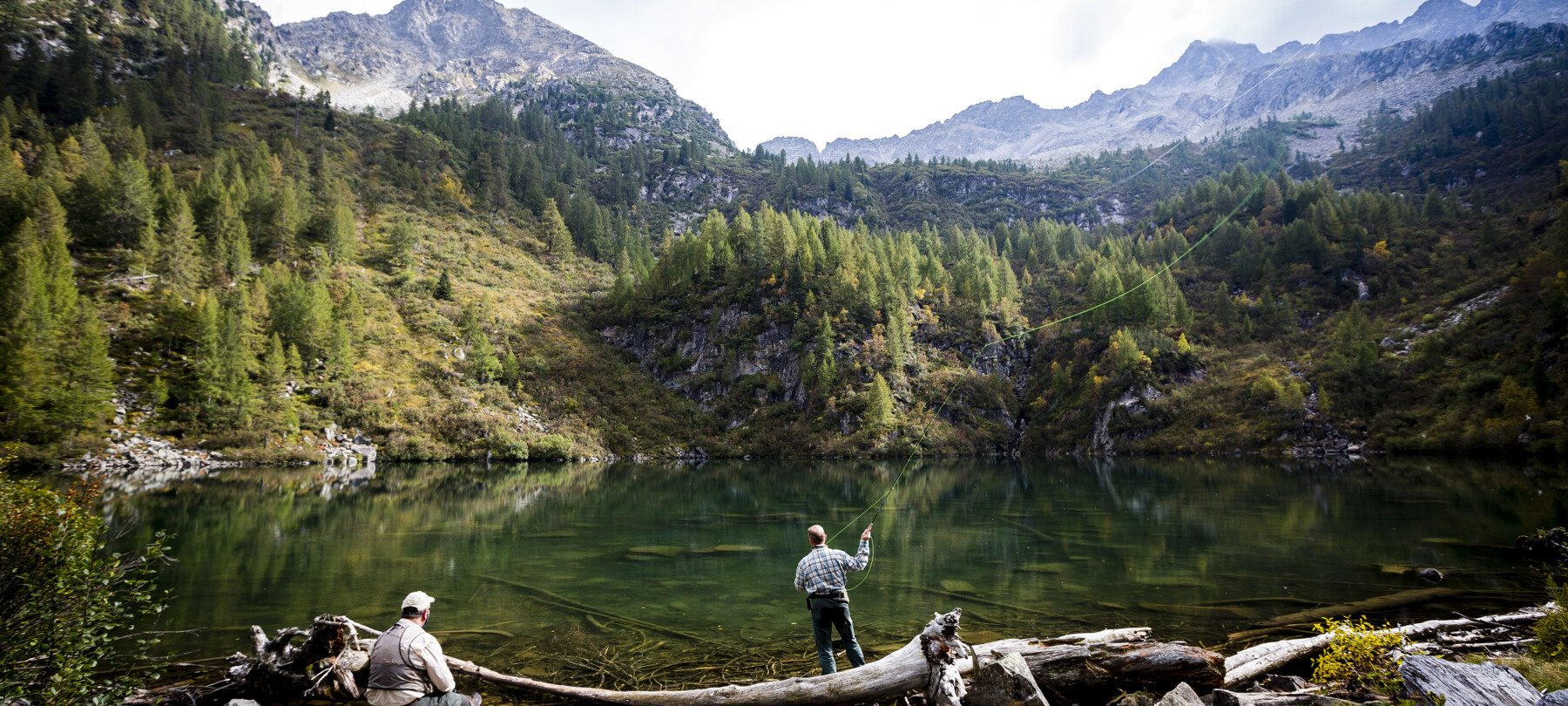
Useful tips
In running waters, marble trout generally feed on bottom benthic organisms and, therefore, should be tackled in that area of the stream. With all techniques, fishermen must be skilled at passing or stationing baits on the bottom.
Furthermore, the water temperature never exceeds 11°C, and, therefore, in most cases trout are rather “slow”. You should never get into the water, especially when water is crystal clear and shallow.
As the season progresses, and in the summer, fishing trips in the evening and early morning are preferred. With artificial spinning lures, it is also possible to use artificial dark sinking fish.
Permits
There are different categories of temporary fishing permits: daily, consecutive two-day and weekly, the latter allowing five fishing days.
The Pescatori Solandri website includes updated and specific information on fishing permits and the list of authorized retailers who issue paper permits.
The daily permit can also be obtained online at www.trentinofishing.it and with the Geotiket app.
Note: As for the RNK1 on the Rabbies stream, Le Marinolde Reserve, the permit must be booked in advance, since only 2 permits per day are issued. On this page you will find all the specific information for booking, and for purchase on trentinofishing.it, which also provides details on daily availability.
Fishing Techniques Allowed
The fishing techniques allowed are summarised below:
- Trofeo 1 and 2 zones: Fly technique with rotating spool reel, Tenkara or Valsesian fly, with a maximum of 2 artificial lures (flies), barbless or with inoperative barb. Spinning technique with a maximum of one single hook without barb or with inoperative barb; soft and rubber and silicone baits are prohibited. The use of a landing net is mandatory. Any fish caught must be released. Fish cannot be mistreated and it is forbidden to photograph them out of the water.
- Zone Trofeo 1 e 2: è consentita la tecnica Mosca con mulinello a bobina rotante, o tenkara, o valsesiana, con massimo 2 esche(mosche) artificiali, senza ardiglione o reso inoperante. Tecnica spinning con massimo un amo singolo senza ardiglione o reso inoperante, vietate le esche morbide e in gomma e silicone. Uso obbligatorio del guadino. È vietato maltrattare i pesci catturati e da rilasciare, anche per fare foto fuori dall'acqua.
- Techniques with artificial and natural baits, with the exception of maggots, can be used in zones AX, A, B, C2 of the Noce stream and H2 of the Rabbies stream. As for live bait fish, only bleaks and minnows can be used. Regarding the hooks, this rule applies under any circumstance: 2 hooks, or 1 treble hook, or 2 artificial flies, all barbless or with inoperative barb. Any fish caught must be released. Fish cannot be mistreated and it is forbidden to photograph them out of the water.
- RNK1 Zone, “Le Marinolde” fly fish Reserve, on the Rabbies stream: fly technique with rotating reel, Tenkara or Valsesian fly, with maximum 2 artificial lures (flies), without barb or with inoperative barb. The use of a landing net is mandatory. Any fish caught must be released. Fish cannot be mistreated and it is forbidden to photograph them out of the water.
